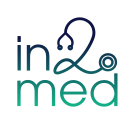Back to: Psychiatry
Delirium
This is an acute confusional state which is characterised by rapid onset of a global but fluctuating dysfunction of the CNS due to a variety of insults on the brain.
– It is more commonly seen in people aged >65 and those with diffuse brain disease (dementia)
– However, it can be experienced by anyone in hospital and is an important thing to keep watch out for
Causes – The main causes can be remembered using the acronym PINCH-ME:
P – Pain
In – Infection (often a UTI in elderly)
C – Constipation
H – Hydration
M – Medication (drugs)
E – Electrolytes (e.g. hyponatraemia)
E – Environment
Symptoms – Delirium is usually divided into 3 main subtypes:
- Hypoactive
This is a type of delirium where the patient will be very withdrawn, quiet and sleepy
– They might display inactive or reduced motor activities or seem to be in a daze
- Hyperactive
This is a type where patients will be restless, agitated and may display aggressive behaviour
– They may exhibit strong emotions with fearfulness and hallucinations and be uncooperative
- Mixed
In this situation, the patient will display signs of hypo- and hyperactive delirium
Other symptoms:
– Poorly explained, transient delusions –> often persecutory with associated ideas of reference
– Autonomic overactivity –> causes sweating, tachycardia and dilated pupils
– Disturbance of sleep-wake cycle –> patient more alert during evening and drowsy during the day.
Diagnosis: To be diagnosed with delirium, patients must satisfy different criteria:
1) Impaired Attention and Awareness
2a) Perceptual Disturbance (e.g. visual illusions/hallucinations) or 2b) Cognitive disturbance (e.g. memory/orientation deficit)
3) Symptoms should develop over a short period of time and fluctuate during day
4) Not due to a pre-existing psychiatric disorder
Assessment – Take a full history
– Mental State Examination to confirm diagnosis
– MOCA (cognitive assessment)
– Physical Examination to find any underlying cause
Investigations:
– Blood test (FBC, U&E, folate, Vit B12, Ca2+)
– Blood cultures –> to rule out infection
– Urinalysis –> to rule out UTI
– ECG and CXR
– CT head/MRI
Management – Treat underlying cause and correct electrolyte and fluid imbalances
– Aim to make the environment as comfortable as possible and the doctors/nursing team the same
– Sedatives include short acting benzodiazepine (lorazepam) and promethazine 25-50mg
– Can also use antipsychotics like haloperidol/risperidone
N.B. It is important to be able to distinguish between delirium and dementia. Here are the main differences:
| Delirium | Dementia | |
| Onset | Fast | Slow and chronic |
| Progression | Fluctuating during the day | slow decline over years |
| Duration | Changes hourly | Months to years |
| Attention, alertness and orientation | Impaired | intact early, impaired late |
| Sleep-wake Cycle | Disrupted | Normal |
| Speech | Confused | Word-finding problems |
| Thoughts | Disorganised/ delusional | Lack of thoughts |
| Perceptions | Disturbances / hallucinations | Intact early on |
| Behaviour | Hypo or hyperactive | Normal but forgetful |


